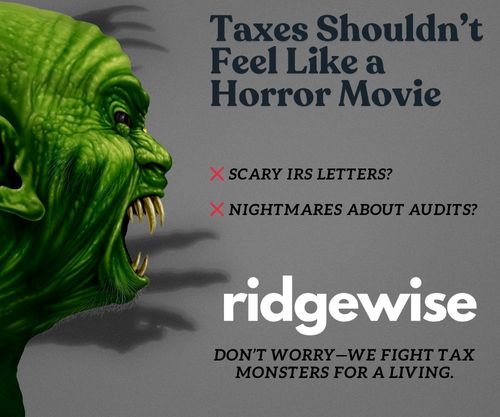Pricing isn’t just about slapping a number on a product; it’s a strategic move that can make or break a firm’s profit margins. When I think about how pricing impacts a company’s bottom line, I see a delicate balance between attracting customers and maximizing revenue. Set prices too high, and you risk driving potential buyers away; set them too low, and you might not cover costs or convey the value of your offering.
Understanding the nuances of pricing strategies can help firms navigate competitive markets and optimize their profit potential. By examining factors like consumer behavior, market conditions, and cost structures, businesses can find that sweet spot where they attract loyal customers and achieve sustainable growth. Let’s dive into how these elements interplay to shape a firm’s profitability.
The Impact of Pricing on Profit Margins
Pricing decisions directly influence a firm’s profit margins. Setting the right price captures value while ensuring competitiveness.
Understanding Profit Margins
Profit margins represent the percentage of revenue remaining after deducting production costs. They measure profitability and indicate financial health. For instance, if a product sells for $100 and costs $60 to produce, the profit margin is 40%. This metric helps in evaluating pricing strategies, ensuring that prices cover costs and generate desired profits.
Key Factors Influencing Pricing Decisions
Several factors influence pricing decisions:
- Cost Structures: Fixed and variable costs impact pricing. Companies must cover costs for production and overhead.
- Market Conditions: Supply and demand fluctuations affect pricing power. Competitive markets often lead to lower prices.
- Consumer Perception: Prices must align with perceived value. High-quality products can command higher prices, while value-oriented items require affordability.
- Competitor Pricing: Industry benchmarks guide pricing. Matching or surpassing competitors can attract and retain customers.
- Regulatory Environment: Legal constraints influence pricing. Price controls and regulations may limit pricing flexibility.
Anchoring pricing strategies in these factors optimizes profit margins by balancing cost coverage and competitive positioning.
Pricing Strategies and Profit Optimization
Proper pricing strategies directly impact a firm’s profit optimization. Understanding various methods enables businesses to maximize revenue while maintaining competitiveness.
Cost-Plus Pricing
Cost-plus pricing involves adding a markup to the production cost. This method ensures covering all costs and secures a profit margin. It’s straightforward and widely used in retail when production costs are stable. However, it disregards competitor pricing and customer value perception, which may affect competitiveness.
For instance, a manufacturer may produce an item for $50 and sell it at $75, ensuring a $25 profit per unit. To optimize this strategy, firms should regularly assess cost structures and market trends.
Value-Based Pricing
Value-based pricing sets prices based on customer perceived value rather than production costs. This approach can lead to higher profit margins if customers see significant value in the product or service.
For example, luxury brands often use value-based pricing, justifying higher prices due to their perceived premium value. Focusing on strong brand positioning, customer segmentation, and continuous value assessment can enhance this strategy. It’s particularly effective in markets where differentiation and customer loyalty are critical.
Competitive Pricing
Competitive pricing involves setting prices based on competitors’ pricing strategies. Businesses either match, undercut, or slightly exceed competitor prices. This strategy ensures market relevance and helps attract price-sensitive customers.
For example, in the tech industry, smartphone manufacturers often adjust prices to remain competitive. To optimize this strategy, firms perform regular competitor analysis and consider market position and unique value propositions.
Competitive pricing requires constant market monitoring to respond quickly to competitor moves and maintain profitability.
Properly implementing and adjusting these pricing strategies supports the firm’s profit optimization goals, aligning costs with competitive positioning and customer perceptions.
Case Studies: Successful Pricing Models
Examining successful pricing models reveals the impact of strategic pricing on a firm’s profit. Below are insights from the tech industry and the retail sector.
Tech Industry Examples
Tech giants like Apple and Adobe leverage value-based pricing. Apple’s premium product pricing, reflective of high perceived value, contributes to significant profit margins. Adobe shifted from one-time purchase to subscription-based models, stabilizing revenue streams and increasing customer lifetime value.
SaaS companies, including Salesforce and Slack, employ tiered pricing strategies. By offering various plans catering to different customer segments, they optimize revenue through upselling and cross-selling.
Retail Sector Case Studies
Walmart’s everyday low pricing (EDLP) aims to attract price-sensitive customers. By focusing on cost leadership and operational efficiency, Walmart drives high volumes and maintains profitability despite low margins.
Luxury brands like Gucci use premium pricing strategies. By maintaining exclusivity and high perceived value, these brands sustain high profit margins, even with lower sales volumes. This strategy builds brand loyalty and positions the products as status symbols.
Trends in Pricing and Profitability
Pricing trends have a direct impact on a company’s profitability. Analyzing these trends reveals patterns and helps predict future pricing models, enabling firms to adjust their strategies and maximize profit.
Current Pricing Trends
Dynamic Pricing: Many companies use dynamic pricing to adjust prices in real-time. Travel industries, such as airlines and hotels, frequently employ this strategy based on demand fluctuations.
Subscription Models: Subscription pricing has gained popularity, especially in software and digital services. Companies like Netflix and Adobe rely on this model to ensure steady revenue and customer retention.
Freemium Models: Firms, particularly in the tech sector, offer basic services for free while charging for premium features. Examples include Spotify and LinkedIn.
Future Outlook
Artificial Intelligence: AI and machine learning will enhance pricing strategies by analyzing vast data sets for optimal price points. This will help firms predict customer behavior and adjust pricing accordingly.
Sustainability Premiums: As consumers become more environmentally conscious, companies might charge premiums for sustainable products. Brands like Patagonia are already adopting this trend.
Personalized Pricing: Future trends indicate a move towards personalized pricing, where firms tailor prices based on individual customer data and purchasing history. This can improve customer satisfaction and profitability.
By understanding these pricing trends and preparing for future shifts, firms can enhance their profitability and stay competitive.
Conclusion
Pricing profoundly impacts a firm’s profit by balancing customer attraction and revenue maximization. By understanding and implementing effective pricing strategies like Cost-Plus Pricing, Value-Based Pricing, and Competitive Pricing, firms can optimize their profit margins. Embracing trends such as dynamic pricing and subscription models can further enhance profitability. The future of pricing lies in leveraging AI for smarter strategies and exploring personalized pricing. Firms that adapt to these evolving trends will not only boost their profitability but also maintain a competitive edge in the market.




